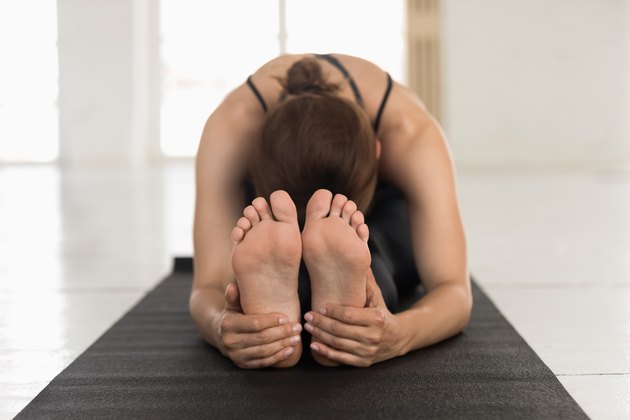Our own Steven Srebnik, PT, MSPT, CHT, was a contributor for this helpful Livestrong.com article!
https://exercises-for-neuropathy-of-the-feet-livestrong
If numbness, tingling and pain in your feet as a result of nerve damage is disrupting your life, your doctor may recommend exercises for neuropathy. While treating the underlying problem that is causing neuropathy is the first step, exercise can help with strength, balance and range of motion.

What Is Neuropathy?
Peripheral neuropathy, which affects the peripheral nervous system, causes damage to the peripheral nerves. It often originates in the hands and feet, causing pain, numbness and tingling, according to the Cleveland Clinic.
Joseph Palmer, DPT, OMPT, a physical therapist at the Greater Baltimore Center for Rehabilitation Medicine, tells LIVESTRONG.com that neuropathy happens for a wide variety of reasons. Some of the most common causes, he says, include chronic diabetes or unregulated blood glucose levels.
Additionally, medication-induced damage from chemotherapy drugs or mechanical nerve entrapment, which results in pressure on the nerve and corresponding damage, can also cause neuropathy, according to Palmer.
Steven Srebnik, PT, MSPT, a physical therapist and founder of Performance Rehabilitation, tells LIVESTRONG.com that as neuropathy progresses, larger nerves become damaged, impairing your position sense and balance. To help manage some of these issues, specific exercises are often recommended.
How Exercise Improves Neuropathy
“Exercise is imperative to address weakness in the legs and balance impairment,” says Srebnik. “Working with a physical therapist who is an expert in program design can help with problems such as this.”
Focusing on exercises specific to strengthening the small muscles in the foot, such as picking up marbles with your toes or scrunching a towel with your toes can help, according to Srebnik.
While peripheral neuropathy remains an ongoing issue, Srebnik says by using a proactive approach, such as diet and exercise, you can do a lot to alleviate the problem and improve the severity of the symptoms.
An April 2014 review published in Frontiers in Cellular Neuroscience found that exercise training for people with peripheral neuropathy from diabetes helped improve nerve function, reduced neuropathic pain and numbness and improved both static and dynamic mobility. The authors concluded that exercise specific to neuropathy could be an effective intervention for reducing symptoms.
Read more: Can Certain Foods Heal Nerve Damage?
How to Exercise With Neuropathy
Exercises for neuropathy are often recommended by a physical therapist or your doctor as part of a treatment plan. “When participating in physical therapy, your therapist may challenge your vestibular system and work on your lower extremity strength, as these activities can help improve your ability to react to a loss of balance,” says Palmer.
In general, Palmer says some exercises for neuropathy in the feet include stretching exercises, aerobic exercise, balance exercises and strength training.
“Stretching can reduce muscle tension and relieve muscle pain, which can be associated with neuropathy,” he says. Some examples of common stretches include:
- Seated calf stretching
- Seated hamstring stretching
- Seated heel and toe raises
For aerobic exercise, Palmer recommends recumbent biking, which can improve blood flow and nerve health. When doing balance exercises, Palmer says you should have proper supervision or appropriate support from a chair or kitchen counter. Examples of balance exercises for neuropathy include:
- While standing, place your feet together, close your eyes and balance. As you progress, you can try standing on one foot, but only if you can remain still.
- Tandem stance, one foot in front of the other, with the eyes open or closed. In this position, challenge the vestibular system by turning your head while your eyes are open.
In addition to stretching, aerobic and balance exercises, Palmer also suggests strength training, since it can improve your ability to react to a loss of balance. “My recommendation is to start with gym equipment that allows you to train in a seated position,” he says. “Knee extension and knee flexion machines, as well as seated leg press, can be helpful to improve leg strength.”
